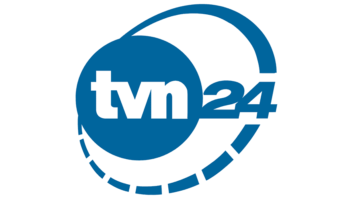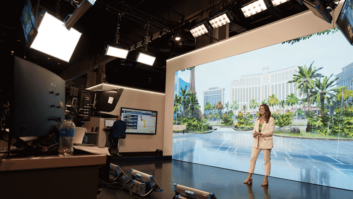
Public Service Media have started experimenting with VR technology for content genres such as news, entertainment and sport, but feedback gathered by the European Broadcasting Union (EBU) suggests that a number of problems are stopping members from committing more resources to the genre.
Meanwhile, AR is making a comeback with several industry players announcing new platforms that promise immediate access to millions of potential users.
For broadcasters, VR continues to be a stimulating but serious challenge with regards to storytelling. Similarly, an image quality that leaves room for improvement, the high bitrates currently required for distribution, a lack of established workflows and the fragmented VR landscape continue to be perceived as major hurdles by broadcasters. Together with high production costs relative to typical viewing times, and the unclear market potential and return on investment, this limits an exploitation of the full potential of the genre.
The EBU believes in the promotion of interoperable standards to overcome problems associated with fragmented ecosystems such as VR. To that end, the EBU has become a VR-IF (Industry Forum) charter member. VR-IF was established at CES 2017 and is going to deliver best practice guidelines to ensure a high quality audio & video VR experience from production to delivery and consumption based on existing and newly created interoperable standards. VR-IF will not develop any standard by itself, but will define use-cases and requirements and take them to standards development organisations (SDOs).
The VR standards situation is sometimes called the Wild West because of the number of active SDOs in the field (MPEG, 3GPP, ITU-R, JPEG, VQEG, Kronos, etc.). But some progress has been made: a first standard for 3-DOF VR – which gives the viewer the three degrees of freedom to control their line of sight – could exist as early as the end of the year.
In particular, the MPEG-I Immersive Media group plans to deliver a standard called OMAF (Omnidirectional Media Applications Format) for 3-DOF VR by the end of 2017 or the beginning of 2018. A standard for 6-DOF – which gives the viewer six degrees of freedom to look and move where they want in a virtual space – is planned for 2021/2022. OMAF will cover projection mapping algorithms, file format encapsulation, metadata signalling, DASH encapsulation, profiles for codecs and coding configurations and guidelines for the viewport VR media processing.
The EBU is also a member of DVB (Digital Video Broadcast), which began drafting commercial requirements for 3-DOF VR systems in April 2017 with the aim to release them to the technical working group in early 2018, once approved by the DVB Commerciale Module and Steering Board. Whenever it is relevant, DVB will take into account the work being done by other VR standardisation and industry organisations, in particular MPEG, VR Industry Forum and 3GPP.
AR leapfrogs its siblings in terms of platform size
With VR continuing to present challenges on multiple fronts, AR has quickly become a new buzzword. AR has been around since the 1990s, and thanks to more powerful real-time graphics engines with sophisticated 3D space mapping and tracking technologies it is now relatively common-place in studio and live television productions, especially for sports events.
But in these last months the focus has shifted rapidly to AR run on consumer devices – PokemonGo style. With Snapchat (World Lenses), Facebook (AR Studio), Microsoft (Story Remix) and Apple (ARKit), several platforms have already positioned themselves as ecosystems for an entirely new type of content. The size of these platforms sets AR apart from VR and their sibling Mixed Reality, which also relies on head-mounted displays (such as Microsoft’s Hololens) and highly sophisticated 3D rendering power, and is most likely still some years away from becoming a more common consumer technology.
The EBU is going to collect the views of its Members about AR, evaluate available tools and platforms (eg Vuforia, Wikitude, Unity, Facebook, Apple and Microsoft) and develop proofs-of-concept. As working with computer vision algorithms, 3D CG modelling and animation requires very specific skills, we aim to understand whether and how some of these new tools open easier paths to developing interactive, engaging and, perhaps, social AR experiences, and whether some harmonisation in standards and technologies will be necessary.
By Paola Sunna, sound and multimedia research engineer, EBU







